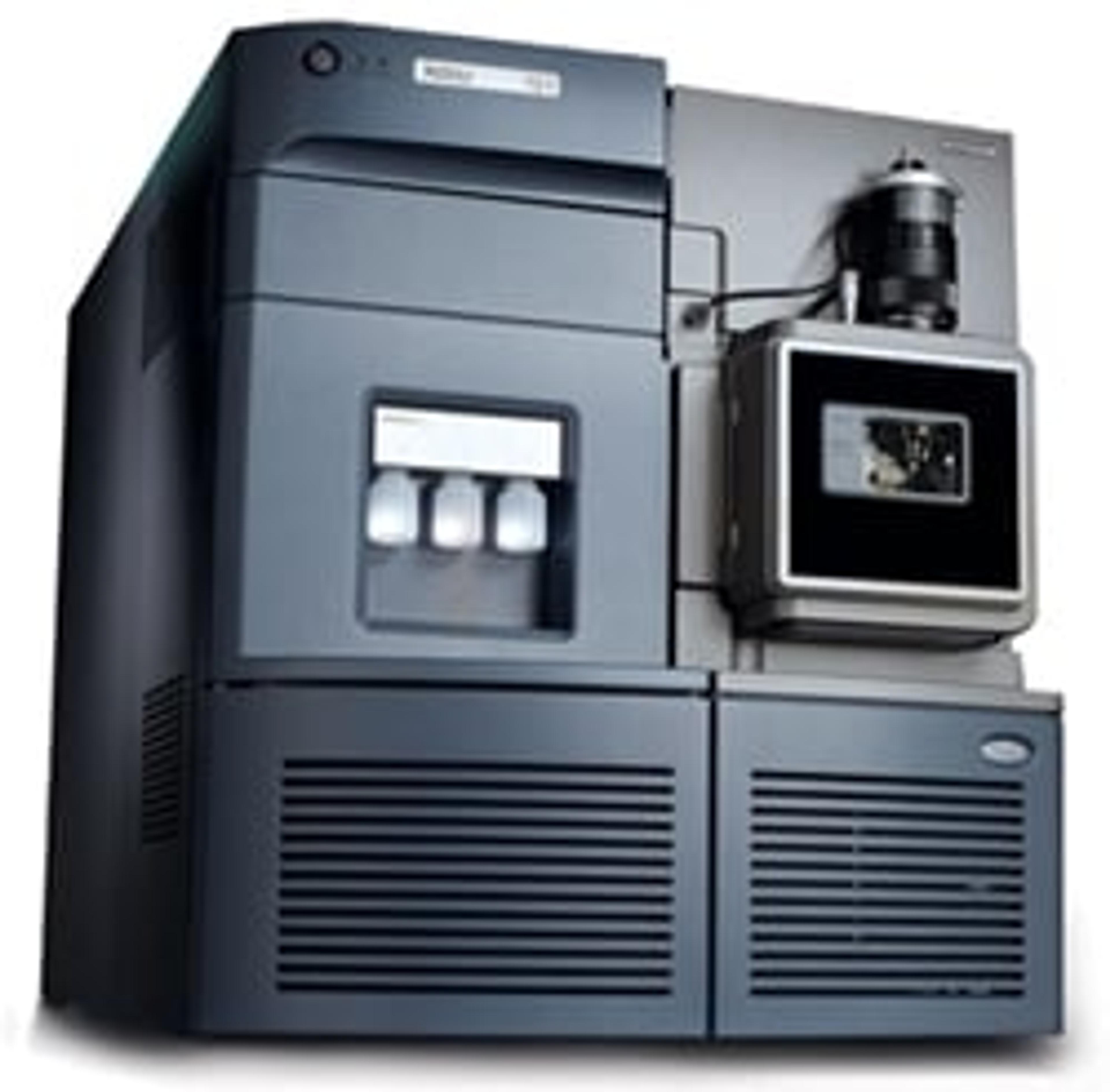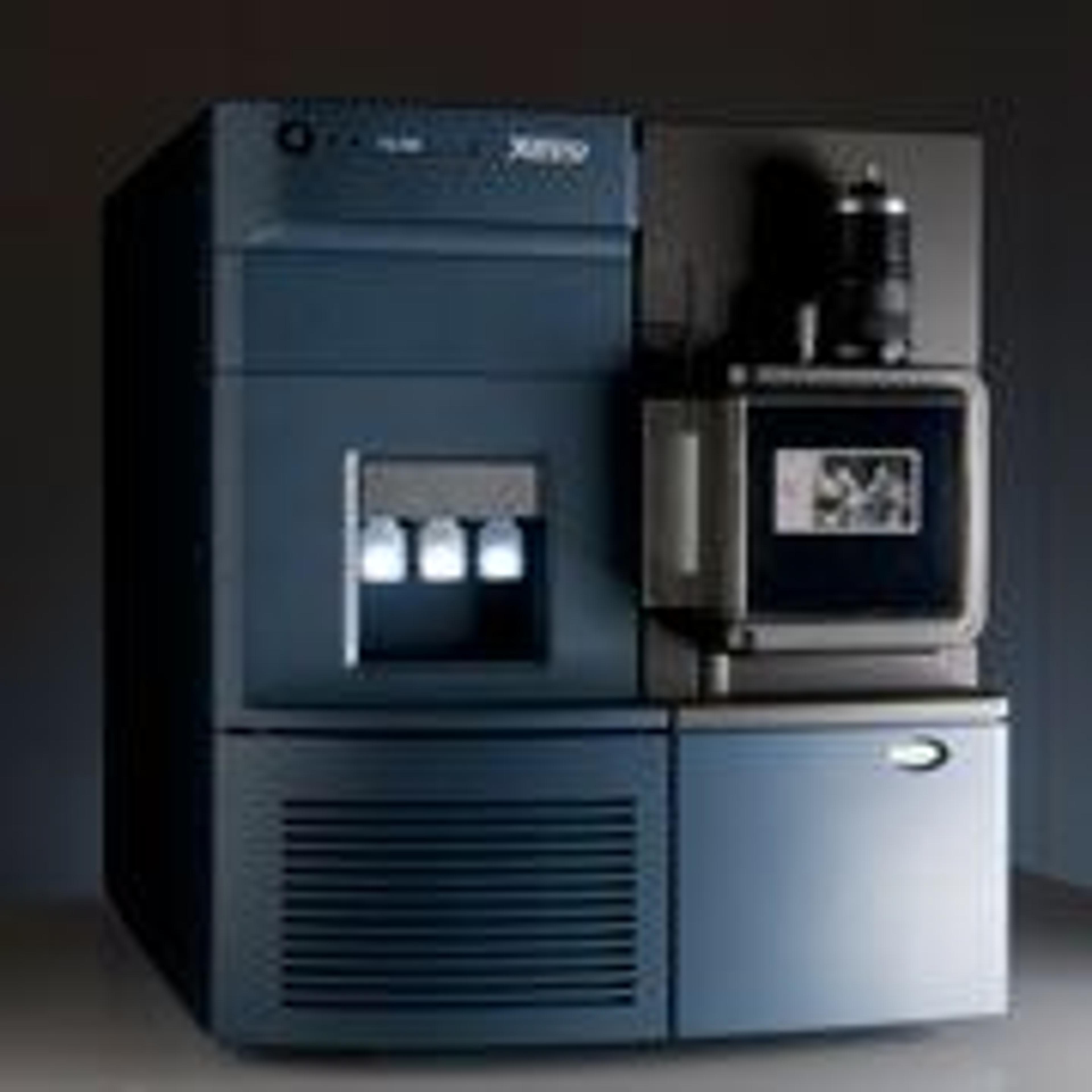New Analytical Tools for Research and Routine Screening Applications
21 May 2012Waters Corporation has introduced new LC/MS instruments for pesticide residue screening and metabolite identification applications, and a new Omics Research Platform at the ASMS Conference on Mass Spectrometry and Allied Topics, the largest scientific conference dedicated to the science of mass spectrometry.
Waters also introduced two new additions to its popular line of Xevo® mass spectrometers – the Xevo G2-S QTof and Xevo G2-S Tof mass spectrometers – for the first time bringing Waters® proprietary StepWave™ ion optics technology to its benchtop quadrupole time-of-flight mass spectrometry products. StepWave is a unique, off-axis ion source technology that delivers robust, reproducible, high sensitivity to mass spectrometry.
Waters also unveiled three new solutions with UNIFI: the Waters Screening Platform Solution, the Waters Pesticide Screening Application Solution and the Waters Metabolite Identification Application Solution. These new solutions with UNIFI delivers everything a laboratory needs – LC and MS hardware, software, consumables and standards and reagents – for routine, general purpose screening, for screening of pesticide residues in foods and beverages and for the separation, identification, and quantification of metabolites.
For advancing scientific research, Waters announced new software that promises to change the way results are visualized and processed for ion mobility mass spectrometry experiments.
"Mass spectrometry is the backbone of today's analytical laboratory. As it becomes ever more prevalent and a workhorse technique, scientists expect more from it. Waters is responding by introducing innovations at both ends of the analytical spectrum – from research to everyday analysis," said Brian Smith, Vice President, Mass Spectrometry Operations for the Waters Division. "With the innovations we are announcing today, we are opening up new paths for discovery and putting laboratories on a path to more accurate and faster results."
Bringing StepWave Ion Optics Technology to Two New Xevo Mass Spectrometers
With the introduction of Waters Xevo G2-S QTof and Waters Xevo G2-S Tof Mass Spectrometers, Waters is bringing the novel StepWave ion optics technology to its benchtop time-of-flight mass spectrometers.
Waters StepWave ion optics technology maximizes instrument sensitivity while minimizing routine maintenance. It transfers ions from the ion source with the highest possible efficiency while actively filtering out undesirable neutral contaminants. As a result MS signals are dramatically increased and, because critical components in the device stay clean for longer periods of time, quantitative results are more reproducible and laboratories experience less downtime due to routine cleaning and maintenance.
Previously only available on the benchtop Waters Xevo TQ-S (tandem quadrupole) mass spectrometer and Waters SYNAPT G2-S HDMS mass spectrometers, StepWave brings a new level of performance to the Xevo quadrupole time of flight and time of flight instruments delivering superior UPLC®-compatible mass resolution, matrix-tolerant dynamic range, quantitative performance, mass accuracy and speed of analysis – simultaneously.
GlaxoSmithKline Pharmaceuticals is one company putting StepWave technology to good use. "Micro-sampling, either through the use of dried blood spots (DBS) or novel techniques for the separation of sub 50 microliters of plasma, is an area of innovation that GlaxoSmithKline is actively pursuing," says Chet Bowen, an investigator with the Bioanalytical Science and Toxicokinetics PTS DMPK Department at GlaxoSmithKline Pharmaceuticals. "In some instances we would like to use 5-10 microliters of biological matrix, therefore we need a mass spectrometer detector capable of achieving low pg/mL detection limits with minimal sample volumes which is why we chose the Waters Xevo TQ-S with StepWave technology. Coupled to an ACQUITY UltraPerformance LC System, it easily enables us to achieve these lower limits of quantification from reduced volume matrices. Additionally, this instrument combination facilitates low LLQ requirements to support our inhaled and biopharmaceutical projects."
Since their introduction in 2008 Waters Xevo mass spectrometers have distinguished themselves on the basis of their trademark simplicity and universal ion source architecture giving scientists a wide selection of interchangeable ion sources best suited for the analysis at hand. All Xevo mass spectrometers feature IntelliStart™ Technology, which automates MS resolution and calibration checks and monitors system performance during a run.
So whether the focus of research is on systems biology, biopharmaceutical characterization, metabolite profiling, forensic toxicology, food analysis or environmental research, Xevo mass spectrometers allow scientists to make the right decisions quickly and confidently.
New Waters Screening Platform Solution with UNIFI™
The Waters Screening Platform Solution with UNIFI is the first and only comprehensive screening solution to target, identify, quantitate and review based on a streamlined analytical workflow that enables more accurate results across a variety of applications.
Waters Screening Platform Solution consists of the ACQUITY UPLC I-Class, the new Xevo G2-S QTof mass spectrometer, UNIFI scientific information system, Waters analytical standards, reagents and Waters chemistries.
New Waters Pesticide Screening Application Solution with UNIFI
The Waters Pesticide Screening Application Solution with UNIFI delivers the ease-of-use, sensitivity, stability, reproducibility, and throughput scientists need to successfully and profitably perform pesticide residue screening in a manner compliant with regulatory requirements today and in the future.
Waters Metabolite Identification Application Solution with UNIFI
Waters Metabolite Identification Application Solution with UNIFI is a comprehensive metabolite identification system assisting the biotransformation scientist in unprecedented ways in identifying and characterizing metabolites in both discovery and development environments.
New Software Maximizes the Ion Mobility Advantage
Since its introduction in 2006, many industries have employed the SYNAPT® HDMS mass spectrometer and its ion mobility capabilities to characterize highly complex samples consisting of hundreds – or even thousands – of sample components. The spectrally-rich datasets can then be mined for nuggets of information that can identify key compositional differences between samples that make decision-making much more effective and straightforward.
Waters announces the release of two software packages to extend the capability of Waters SYNAPT G2-S mass spectrometer's capabilities. Waters HDMS Compare Software is an effective tool for making rapid binary comparisons of samples (from raw polymer products to biopharmaceuticals). Based on the separation capabilities of IMS-Tof/MS it is possible to use HDMS Compare to detect and visualize the differences between apparently identical samples.
At the most basic level this visualization software alone may be sufficient to accept or reject a sample when compared to a standard, or to confirm the equivalence or difference between two samples of interest.
At a more complex level, the drift time and spectral information associated with the components responsible for the differentiation can be extracted from the dataset and analyzed to better understand the underlying reasons for the observed differences.
The need for this type of molecular fingerprinting is critical and applications abound including those for oil and petroleum, lubricants, polymers, biofuels, fragrances, cosmetics, and consumer electronics among many others.
The second software product for the Waters SYNAPT G2-S Mass Spectrometer is Waters High Definition Imaging (HDI) software, a new, fully integrated software suite for MALDI imaging experiments. Now for the first time, scientists can fully exploit the orthogonal dimension of separation afforded by ion mobility in an imaging experiment. HDI enables users to distinguish analytes - drugs and their metabolites, for example - from isobaric endogenous interferences.
Waters Introduces Omics Research Platform with TransOmics Informatics Software
To take on the challenges posed by systems biology research, Waters is announcing a new omics research platform aimed at harmonizing into a single platform what were once regarded as unique and separate research workflows – proteomics and metabolomics. Gone are the days where researchers working independently of one another generating parallel streams of proteomics and metabolomics data have to draw conclusions based on an incomplete molecular profile.
Together with Nonlinear Dynamics (Newcastle Upon Tyne, UK), a world leader in proteomics and metabolomics analysis software, Waters has created two new Omics system solutions that, for the first time, allow researchers to exploit and visualize the benefits of coupling high-peak-capacity separations with either Waters ACQUITY® UPLC I-Class or nanoACQUITY UPLC® technology and Waters SYNAPT High Definition Mass Spectrometry powered by TransOmics™ Informatics software for bottom-up analysis of complex mixtures.
Researchers are now able to interrogate massive amounts of data, share results and draw conclusions supported by more complete sets of analytical data produced on a single omics platform.
Professor Bernhard Kuster, Chair of Proteomics and Bioanalytics, Technische Universitaet Muenchen, Munich, Germany has had experience using Nonlinear Dynamics software.
"The Progenesis LC-MS software from Nonlinear Dynamics has greatly facilitated our systematic research on drug-protein interactions since it virtually eliminates the common issue of 'missing values' in large-scale experiments. The very high information density created by data independent acquisition schemes in combination with ion mobility measurements on Waters SYNAPT systems further highlights the need for powerful informatics tools," he said. "While the last 10 years of MS-based proteomics were driven by improvements in MS-hardware performance, it is my feeling that the next 10 years will be driven by informatics. I am therefore pleased to see two strong partners in the field teaming up to address this challenge."
Infectious Disease Researcher Receives ASMS Research Award Sponsored by Waters Corporation
On Tuesday, May 22, Dr. Ileana M. Cristea of Princeton University received the 2012 ASMS Research Award sponsored by Waters Corporation in recognition of her research at the interface of mass spectrometry and virology. The award, which comes with a cash prize of $35,000, is being awarded to Dr. Cristea for her research into identifying and understanding mechanisms of defense against viruses and investigating new therapeutics for treating diseases caused by the herpes simplex and human immunodeficiency virus (HIV). 2012 marks the 26th year of award sponsorship by Waters Corporation.


